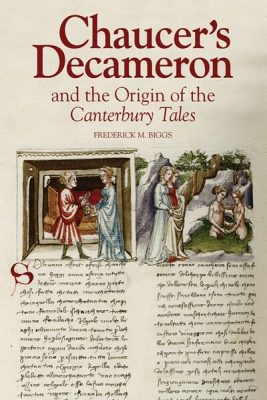Frederick M. Biggs, Author
A possible direct link between the two greatest literary collections of the fourteenth century, Boccaccio’s Decameron and Chaucer’s Canterbury Tales, has long tantalized readers because these works share many stories, which are, moreover, placed in similar frames. And yet, although he identified many of his sources, Chaucer never mentioned Boccaccio; indeed when he retold the Decameron’s final novella, his pilgrim, the Clerk, states that it was written by Petrarch. For these reasons, most scholars now believe that while Chaucer might have heard parts of the earlier collection when he was in Italy, he did not have it at hand as he wrote.
This volume aims to change our understanding of this question. It analyses the relationship between the “Shipman’s Tale”, originally written for the Wife of Bath, and Decameron 8.10, not seen before as a possible source. The book also argues that more important than the narratives that Chaucer borrowed is the literary technique that he learned from Boccaccio – to make tales from ideas. This technique, moreover, links the “Shipman’s Tale” to the “Miller’s Tale” and the new “Wife of Bath’s Tale”. Although at its core a hermeneutic argument, this book also delves into such important areas as alchemy, domestic space, economic history, folklore, Irish/English politics, manuscripts, and misogyny.
